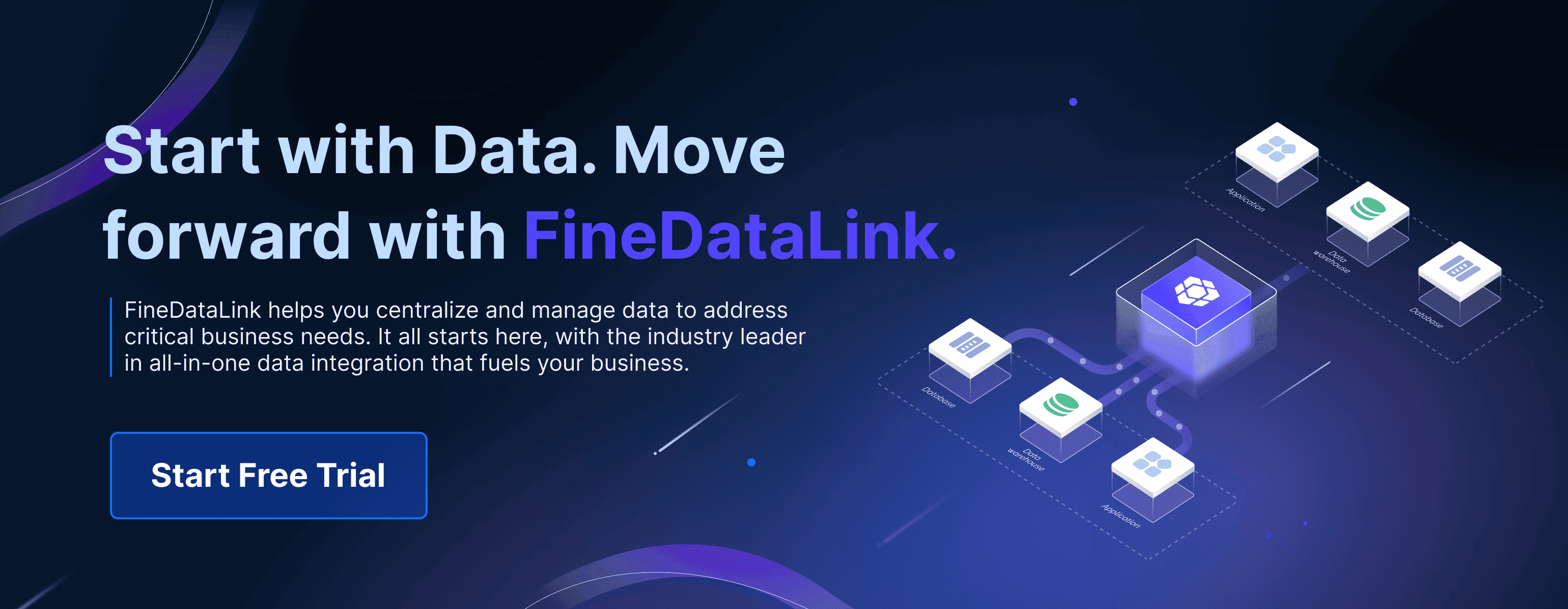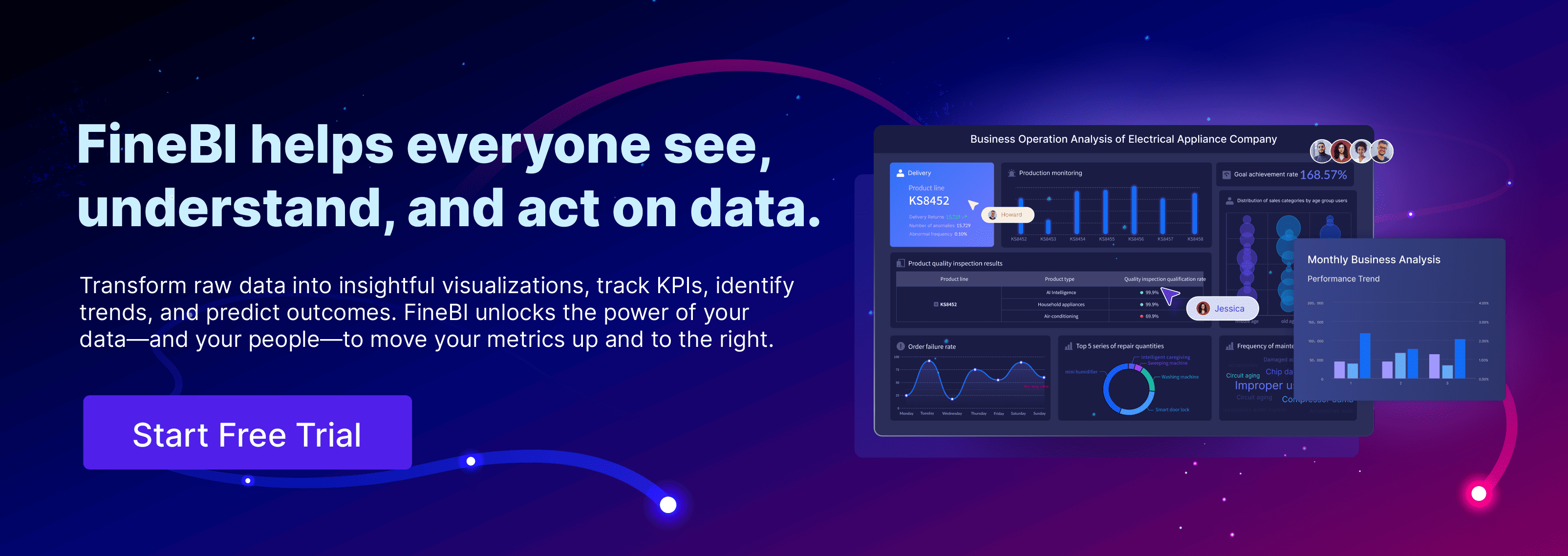Malaysia is rapidly becoming a key player in the global data center market, particularly in the context of data center Malaysia. By 2025, the country is expected to witness transformative growth, driven by its strategic initiatives and rising demand for digital services. Several factors contribute to this ascent:
- The global data center market is forecasted to generate $344.06 billion by 2024, with Malaysia poised to benefit from this surge in data center Malaysia.
- Small and medium enterprises, making up 97.4% of businesses in Malaysia, increasingly rely on cloud computing, fueling demand for local data centers.
- Affordable internet services and the rise in smartphone usage are driving data traffic and storage needs.
These trends position Malaysia as a regional hub for data center development, paving the way for innovation and economic growth.
Key Takeaways
- Malaysia is becoming important in the global data center market by 2025, thanks to growing digital service needs.
- Big tech companies, like Google's $2 billion investment, show Malaysia's value as a key spot for data centers.
- More people using cloud tools and AI means stronger data centers are needed in many industries.
- The government helps by giving tax breaks for energy-efficient data centers.
- Malaysia's location allows fast internet connections to big markets, making it attractive for data center projects.
- The country has cheaper land and energy than nearby competitors, making it a smart choice for businesses.
- Problems like higher energy use and strict rules need solving for steady growth in data centers.
- Using green energy and advanced technology will be very important for data center Malaysia success.
Key Drivers of Data Center Malaysia Growth
Investments from Global Tech Giants
Global tech giants are playing a pivotal role in accelerating data center Malaysia growth. Companies like Google have recognized the country's potential as a strategic hub for technological innovation. For instance, Google has committed to investing $2 billion in data center Malaysia and cloud market. This substantial investment highlights the region's growth potential and its importance in the global digital economy.
The data center Malaysia market is also experiencing impressive growth. In 2023, the market size reached $1.81 billion, and projections indicate it will grow to $3.97 billion by 2029, with a compound annual growth rate (CAGR) of 13.92%.
These investments reflect a broader trend of global tech companies viewing Southeast Asia as a hub for technological advancements. By choosing Malaysia, these companies are not only boosting the local economy but also positioning the country as a leader in the data center market.
Cloud Adoption and AI Advancements
The rapid adoption of cloud technologies and advancements in artificial intelligence (AI) are driving data center Malaysia expansion. Businesses across industries are increasingly relying on cloud adoption to enhance operational efficiency and scalability. This trend is fueling demand for robust data center infrastructure to support these digital transformations.
In 2023, investments in data center Malaysia reached $10.23 billion, with a projected market size of $17.73 billion by 2029, growing at a CAGR of 9.59%.
Additionally, the rise of AI technologies is creating new opportunities for data center Malaysia. AI-driven applications require significant computational power and storage capabilities, which data centers can provide. This demand is also impacting related industries, such as steel, with projections showing steel consumption will rise to between 8.3 million and 9 million tonnes in 2024 due to data center investments.
Government Policies and Digital Transformation
Malaysia's government has implemented forward-thinking policies to support data center growth and digital transformation. The Ministry of Investment, Trade, and Industry (MITI) has introduced guidelines for sustainable data centers, ensuring they meet energy, water, and carbon efficiency standards. These metrics are prerequisites for tax incentives under the Digital Ecosystem Acceleration Scheme (DESAC).
| Metric Type | Requirement |
|---|---|
| Power Usage Effectiveness (PUE) | 1.4 or lower for hyperscale data centers |
| Water Usage Effectiveness (WUE) | 2.2 m³/MWh or lower |
| Carbon Usage Effectiveness (CUE) | Based on regional Grid Emission Factor (GEF) values |
Collaboration between MITI, the Malaysian Investment Development Authority (MIDA), and SIRIM Berhad is further enhancing these policies. These initiatives aim to attract more investments while ensuring sustainability. By aligning with global standards, Malaysia is positioning itself as a competitive player in the data center market.
Strategic Location and Connectivity
Malaysia’s strategic location and robust connectivity make it an ideal destination for data center investments. Positioned at the crossroads of the Asia-Pacific region, Malaysia serves as a gateway to key markets. This geographical advantage allows businesses to access major economies like China, India, Singapore, and Australia with ease. You benefit from low latency connectivity to these regions, ensuring faster data transmission and seamless operations.
The country’s telecommunications infrastructure further strengthens its appeal. Extensive fiber-optic networks and high-speed internet technology provide reliable and efficient connectivity. These systems support the growing demands of the data center Malaysia market, enabling businesses to scale their operations without compromising performance.
| Aspect | Details |
|---|---|
| Geographical Advantage | Malaysia is located at the crossroads of Asia-Pacific, serving as a gateway to key markets. |
| Connectivity | Offers low latency connectivity to Singapore, China, India, and Australia. |
| Telecommunications | Robust infrastructure with extensive fiber-optic networks and high-speed internet technology. |
Malaysia’s proximity to Singapore, a global data center hub, adds another layer of strategic value. You can leverage this closeness to access advanced technologies and expertise while benefiting from Malaysia’s cost-effective infrastructure. This combination positions Malaysia as a competitive player in the data center market.
For businesses seeking to expand their digital footprint, Malaysia offers a unique blend of affordability, connectivity, and accessibility. Its strategic location ensures that your data center operations remain efficient and globally connected, making it a prime choice for investment.
Market Dynamics and Regional Competition Shaping Data Center Malaysia
Malaysia's Position in the Southeast Asian Data Center Market
Malaysia has emerged as a strong contender in the Southeast Asian data center market. Its strategic initiatives and growing digital ecosystem have positioned it as a preferred destination for data center investments. The country benefits from its robust infrastructure, skilled workforce, and government support, which collectively create an attractive environment for businesses.
The ASEAN region is experiencing a surge in data center capacity, projected to grow from 1,677 MW in early 2024 to 7,589 MW by 2028. Malaysia stands out with an impressive compound annual growth rate (CAGR) of 32% to 56% between 2023 and 2028. This growth rate far exceeds Singapore's 8% CAGR, highlighting Malaysia's potential to lead the regional market. The Malaysian government has also established a Digital Investment Office to streamline data center approvals, further enhancing its appeal to investors.
Competitive Landscape: Singapore, Indonesia, and Thailand
When comparing Malaysia to its regional competitors, including Singapore, Indonesia, and Thailand, several factors come into play. Singapore has long been a global data center hub, but its high costs and land scarcity present challenges. Indonesia and Thailand are emerging players, yet they lack the infrastructure and regulatory framework that Malaysia offers.
The table below highlights key factors that differentiate Malaysia from its competitors:
| Factor | Malaysia | Singapore | Indonesia | Thailand |
|---|---|---|---|---|
| Cost-competitiveness | Lower land and energy costs | Higher costs | N/A | N/A |
| Skilled workforce | Well-educated talent pool | N/A | N/A | N/A |
| Digital ecosystem | Investment in 5G and AI | N/A | N/A | N/A |
| Supply constraints | N/A | Land scarcity and strict policies | N/A | N/A |
| Data localization regulations | Stronger regulations | N/A | N/A | N/A |
| Government incentives | Active tax breaks and incentives | N/A | N/A | N/A |
This comparison underscores Malaysia's strategic advantages, particularly in cost-competitiveness and government support. These factors make it a compelling choice for businesses seeking to establish or expand their data center operations in the region.
Malaysia's Strategic Advantages in Cost and Infrastructure
Malaysia's cost and infrastructure advantages set it apart in the regional data center market. The country offers lower land and energy costs compared to Singapore, making it a more affordable option for businesses. Additionally, Malaysia and Indonesia are identified as prime beneficiaries of the growing global demand for data centers in ASEAN.
The Malaysian government has taken proactive steps to enhance its investment climate. The Digital Investment Office plays a crucial role in expediting data center approvals, ensuring a smooth process for investors. This initiative, combined with the country's strong infrastructure, positions Malaysia as a leader in the data center market.
The rapid growth of data center capacity in ASEAN further highlights Malaysia's potential. With a projected CAGR of up to 56% from 2023 to 2028, Malaysia is poised to become a key player in the global data center landscape. Its strategic location, cost advantages, and supportive policies make it an ideal destination for data center investments.
Major Investments and Key Players in Data Center Malaysia
Notable Data Center Malaysia Projects and Developments
Data center Malaysia industry is witnessing significant investments and developments, solidifying its position as a regional hub. The Malaysia Data Center Construction Market is projected to reach a valuation of USD 2.74 billion by 2024. This growth reflects the increasing demand for robust infrastructure to support digital transformation.
Several key projects highlight the scale of investment in the sector:
- In April 2024, Asia-Pacific Strategic Investments Limited (APS) acquired a data center company to expand into Malaysia. This move marked APS's entry into the data center market.
- Singtel announced plans in July 2023 to develop a data center in Johor. This project is expected to create new opportunities for vendors and further enhance Malaysia's data centre growth.
- Prominent players like Aurecon Group Pty Ltd, AECOM, DSCO Group Pte Ltd, Turner & Townsend, and Jacobs Engineering Group are actively contributing to the construction and development of data center Malaysia.
These projects underscore Malaysia's commitment to becoming a leader in the data center industry. You can expect continued growth as more companies recognize the country's potential.
Contributions of Hyperscalers and Colocation Providers
Hyperscalers and colocation providers play a pivotal role in driving data center Malaysia expansion. Hyperscalers, such as global cloud service providers, focus on building large-scale facilities to meet the growing demand for cloud services. Colocation providers, on the other hand, offer shared infrastructure solutions, enabling businesses to scale their operations efficiently.
The table below outlines the market size forecast and year-over-year growth for these categories between 2024 and 2029:
| Category | Market Size Forecast (2024-2029) | Year-over-Year Growth (2024-2029) |
|---|---|---|
| Hyperscale | Data in $ million | Data in % |
| Colocation | Data in $ million | Data in % |
These contributions highlight the importance of hyperscalers and colocation providers in shaping data center Malaysia landscape. Their investments not only drive infrastructure development but also create opportunities for local businesses and vendors.
Role of Local Companies and Partnerships
Local companies and strategic partnerships are essential to Malaysia's data center growth. They bring expertise, innovation, and localized solutions to the industry. Companies like FanRuan play a crucial role in enhancing operational efficiency and data-driven decision-making within data centers.
FanRuan's suite of products, including FineBI, FineDataLink, and FineReport, empowers data centers with advanced analytics, real-time data integration, and dynamic reporting capabilities. For example:
- FineBI enables self-service analytics, allowing you to explore data independently and make informed decisions.
- FineDataLink simplifies data integration across multiple sources, ensuring seamless operations within data centers.
- FineReport provides pixel-perfect reporting and visualization, enhancing the presentation of critical insights.
By leveraging these tools, data center Malaysia can optimize their performance, reduce operational inefficiencies, and stay competitive in the global market. Partnerships with companies like FanRuan demonstrate the value of collaboration in driving innovation and achieving sustainable growth.
Challenges in Data Center Malaysia Industry
Energy Demand and Sustainability Concerns
Malaysia's data center industry faces significant challenges related to energy consumption and sustainability. The country's energy demand continues to rise, with per capita electricity consumption reaching nearly 5,000 kWh in 2023. This figure surpasses that of neighboring countries, reflecting the growing strain on Malaysia's energy resources. Additionally, the per capita energy consumption stood at 2.8 tonnes of oil equivalent (toe) in 2023, further highlighting the high energy requirements of industries, including data centers.
Greenhouse gas (GHG) emissions also pose a challenge. Malaysia recorded 330 million tonnes of CO2 equivalent emissions in 2019. Although the government has committed to reducing GHG intensity of GDP by 45% by 2030 compared to 2005 levels, achieving this goal requires significant efforts. Data centers, known for their high energy usage, must adopt sustainable practices to align with these targets. Transitioning to renewable energy sources and improving energy efficiency are critical steps for addressing these concerns.
Regulatory and Compliance Barriers
Operating a data center in Malaysia involves navigating complex regulatory frameworks. The government has introduced stringent guidelines to ensure sustainability and compliance. While these measures aim to promote environmental responsibility, they can create hurdles for businesses. For instance, data centers must meet specific metrics, such as a Power Usage Effectiveness (PUE) of 1.4 or lower for hyperscale facilities, to qualify for tax incentives under the Digital Ecosystem Acceleration Scheme (DESAC).
Adhering to these standards requires significant investment in advanced technologies and infrastructure. Smaller companies may find it challenging to meet these requirements, potentially limiting their ability to compete. Additionally, the approval process for new data center projects can be time-consuming, further complicating expansion efforts. Streamlining regulatory procedures and providing support for smaller players could help mitigate these barriers.
Rising Costs and Talent Shortages
The rising costs of land, energy, and construction materials add another layer of complexity to Malaysia's data center industry. As demand for data storage grows, so does the need for larger and more advanced facilities. However, the increasing cost of steel and other materials makes construction more expensive. These financial pressures can deter new investments and slow down industry growth.
Talent shortages further exacerbate the situation. The data center industry requires a skilled workforce, including IT professionals, engineers, and technicians. Malaysia faces a gap in the availability of such talent, which can hinder the efficient operation and maintenance of data centers. Investing in education and training programs is essential to address this issue. By equipping the workforce with the necessary skills, Malaysia can strengthen its position as a competitive player in the global data center market.
Future Opportunities in Data Center Malaysia Growth
Renewable Energy Integration and Green Data Center Malaysia
The future of data centers lies in sustainability. As energy demands rise, integrating renewable energy sources and adopting green practices will become essential. You can expect significant growth in this area, as the green data center market is projected to expand from USD 49.2 billion in 2020 to USD 140.3 billion by 2026, with a CAGR of 19.1%. This trend reflects the increasing need for energy-efficient solutions to manage operational costs and environmental impact.
Key drivers for this growth include:
- Rising electricity costs, which push businesses to seek cost-effective energy alternatives.
- Advancements in energy-efficient cooling technologies, reducing the carbon footprint of data centers.
- Adoption of ECO modes in uninterruptible power supplies (UPS), which can improve energy efficiency by up to 99%.
By integrating renewable energy sources like solar and wind, data centers can reduce their reliance on traditional power grids. These efforts not only lower operational costs but also align with global sustainability goals. For your business, investing in green data centers offers a dual benefit: cost savings and enhanced corporate responsibility.
Smart City Developments and IoT Expansion
Smart cities are transforming urban landscapes, and data centers play a pivotal role in this evolution. As cities adopt Internet of Things (IoT) technologies, the demand for data storage and processing grows exponentially. You will see data centers becoming the backbone of smart city infrastructure, enabling real-time data analysis and decision-making.
IoT devices generate vast amounts of data, from traffic sensors to smart home systems. To manage this influx, data centers must evolve to handle high-speed data processing and storage. This shift creates opportunities for you to invest in scalable and efficient data center solutions tailored to smart city needs.
Additionally, smart cities prioritize sustainability. Data centers supporting these cities must adopt energy-efficient designs and renewable energy sources. By aligning your data center operations with smart city initiatives, you can position your business as a leader in innovation and sustainability.
Potential for Edge Computing and 5G Infrastructure
Edge computing and 5G technology are revolutionizing the data center landscape. These advancements bring data processing closer to the source, reducing latency and improving efficiency. By 2025, edge computing is expected to account for 30% of data center growth, driven by the need for faster and more reliable data processing.
Key trends shaping this growth include:
- Global spending on AI-related infrastructure, projected to exceed $300 billion in 2025.
- Modular data centers with prefabricated components, which reduce construction timelines from years to months.
- The 'edge-first' approach, emphasizing compact, energy-efficient, and scalable solutions for AI workloads.
5G infrastructure further enhances the potential of edge computing. With its high-speed connectivity and low latency, 5G enables seamless integration of IoT devices and AI applications. For your business, adopting edge computing and 5G technologies can unlock new opportunities in industries like healthcare, manufacturing, and autonomous vehicles.
By embracing these innovations, you can future-proof your data center operations and meet the growing demands of a digital-first world. The combination of edge computing and 5G infrastructure ensures that your business remains competitive in an increasingly connected ecosystem.
Leveraging FineDataLink for Real-Time Data Integration in Data Center Malaysia Operations
Efficient data integration is the backbone of modern data centers. As data volumes grow exponentially, you need tools that can handle real-time synchronization across multiple systems. FineDataLink offers a powerful solution for this challenge, enabling seamless data integration and transformation to optimize your data center operations.
Why Real-Time Data Integration Matters
Real-time data integration ensures that your data remains accurate and up-to-date across all systems. This capability is critical for data centers, where delays in synchronization can disrupt operations and compromise decision-making. With FineDataLink, you can achieve:
- Instant Data Updates: Synchronize data across multiple tables with minimal latency, measured in milliseconds.
- Improved Operational Efficiency: Reduce manual intervention and streamline workflows.
- Enhanced Decision-Making: Access real-time insights to respond quickly to changing conditions.

Tip: Real-time data integration is essential for industries like e-commerce, healthcare, and finance, where timely data access can make or break critical operations.
Key Features of FineDataLink
FineDataLink simplifies complex data integration tasks with its user-friendly interface and advanced capabilities. Here’s how it can transform your data center:
- Real-Time Synchronization: Build a real-time data warehouse to ensure your data is always current.
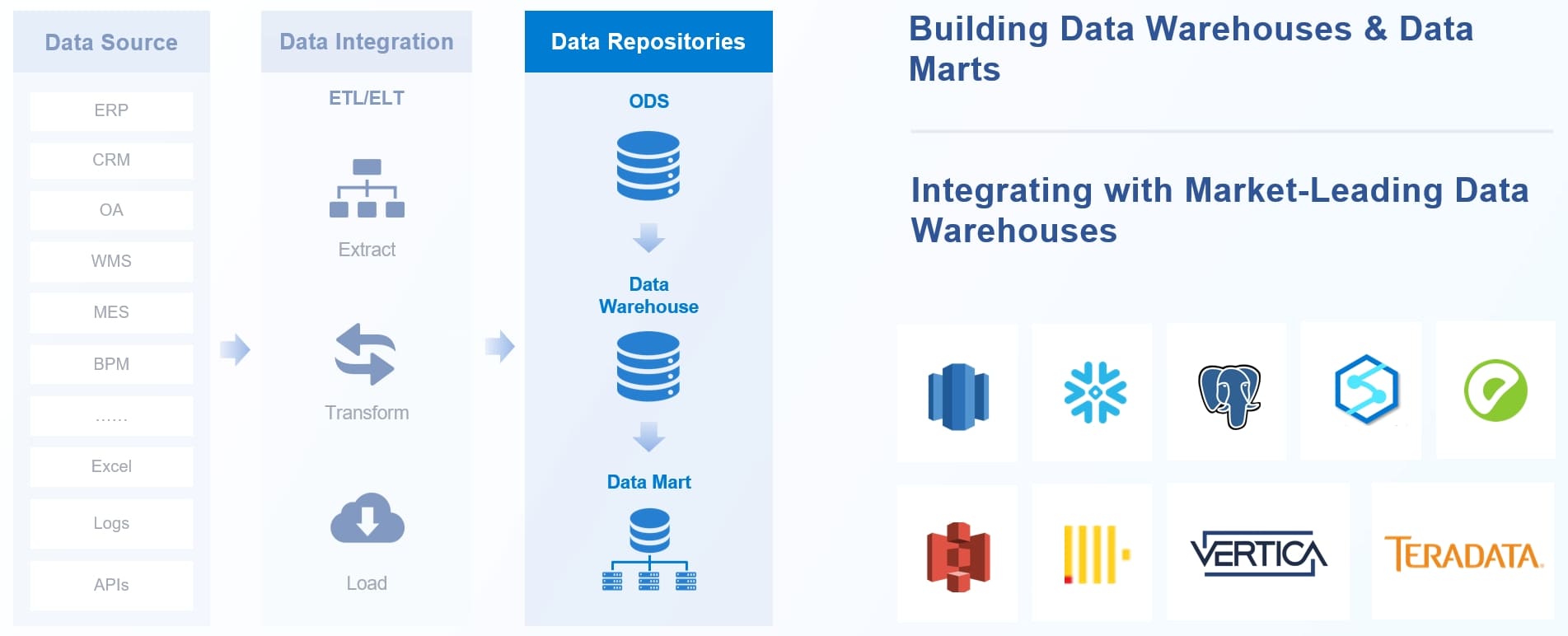
- ETL/ELT Functions: Preprocess data efficiently for analytics and reporting.
- API Development: Create and launch APIs in under five minutes without coding.
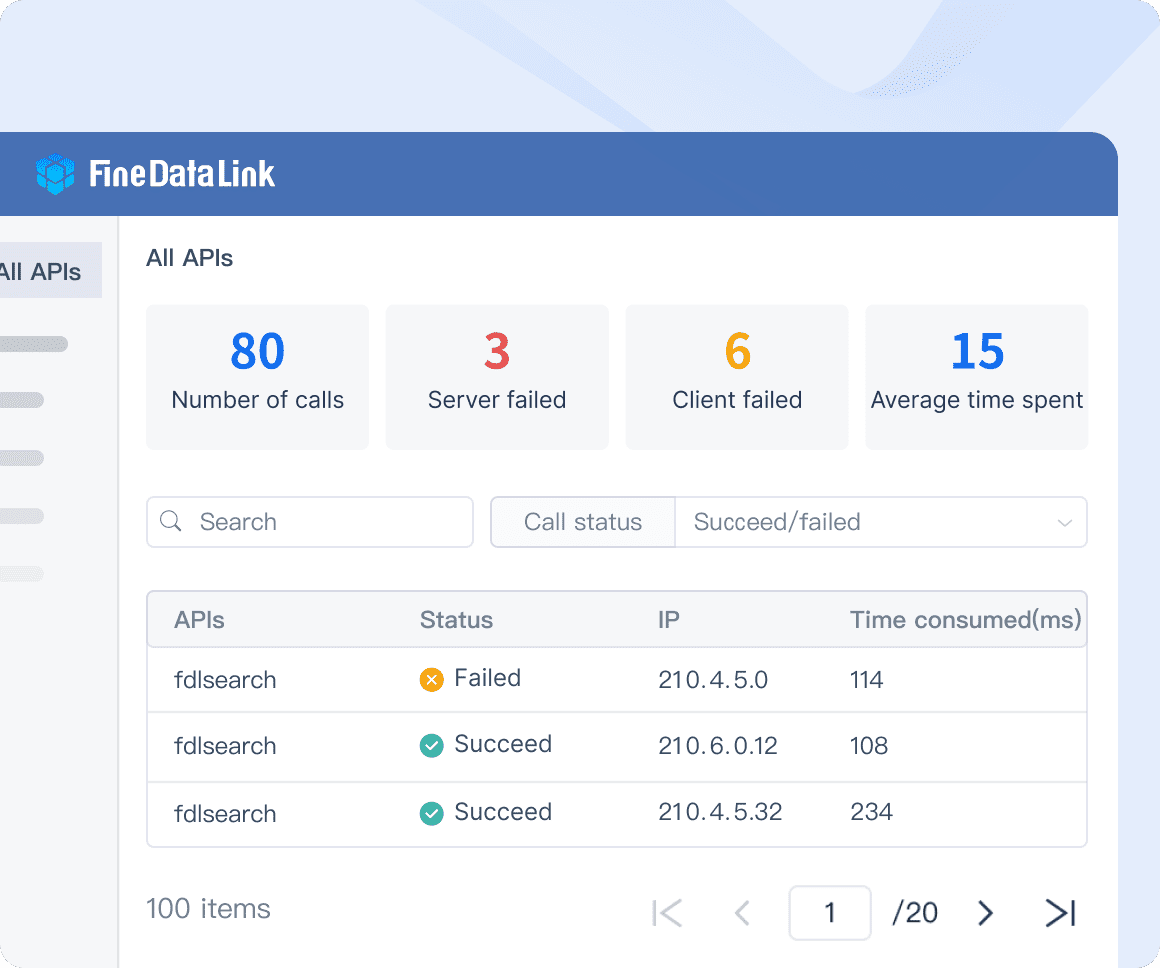
- Support for Diverse Data Sources: Integrate over 100 common data sources, including SaaS applications and legacy systems.
| Feature | Benefit |
|---|---|
| Real-Time Synchronization | Keeps your data updated instantly, reducing latency. |
| ETL/ELT Functions | Prepares data for analysis, saving time and improving accuracy. |
| API Development | Simplifies data sharing between systems, enhancing connectivity. |
| Diverse Data Sources | Ensures compatibility with various platforms, increasing flexibility. |
Practical Applications in Data Center Malaysia
FineDataLink’s capabilities make it an invaluable tool for data centers. You can use it to:
- Migrate Databases: Transfer data seamlessly between systems without downtime.
- Monitor Data Pipelines: Track data flow in real-time to identify and resolve issues quickly.
- Build Scalable Infrastructure: Support growing data demands with efficient integration processes.
For example, if your data center handles customer transactions, FineDataLink ensures that every transaction is recorded and synchronized instantly. This reduces errors and enhances customer satisfaction.
Benefits for Data Center Malaysia
By leveraging FineDataLink, you can unlock several advantages:
- Cost Savings: Automate processes to reduce operational expenses.
- Scalability: Handle large volumes of data without compromising performance.
- Reliability: Ensure data accuracy and consistency across all systems.
Note: FineDataLink’s visual interface makes it easy for your team to deploy and operate, even if they lack technical expertise.
Future-Proofing Your Operations
As data centers evolve, real-time integration will become even more critical. FineDataLink positions your operations for future growth by supporting advanced technologies like edge computing and IoT. Its ability to integrate diverse data sources ensures that your data center remains agile and adaptable to emerging trends.
FineDataLink is more than a tool; it’s a strategic asset for your data center. By adopting this platform, you can enhance efficiency, improve decision-making, and stay ahead in a competitive market.
The Role of FanRuan in Data Center Malaysia
FineBI for Data-Driven Decision-Making in Data Center Malaysia
FineBI empowers you to make smarter decisions by transforming raw data into actionable insights. This self-service business intelligence tool simplifies data analysis, enabling you to explore trends, track KPIs, and predict outcomes without relying on IT teams.
With FineBI, you can:
- Connect to Multiple Data Sources: Integrate data from relational databases, big data platforms, and Excel files.
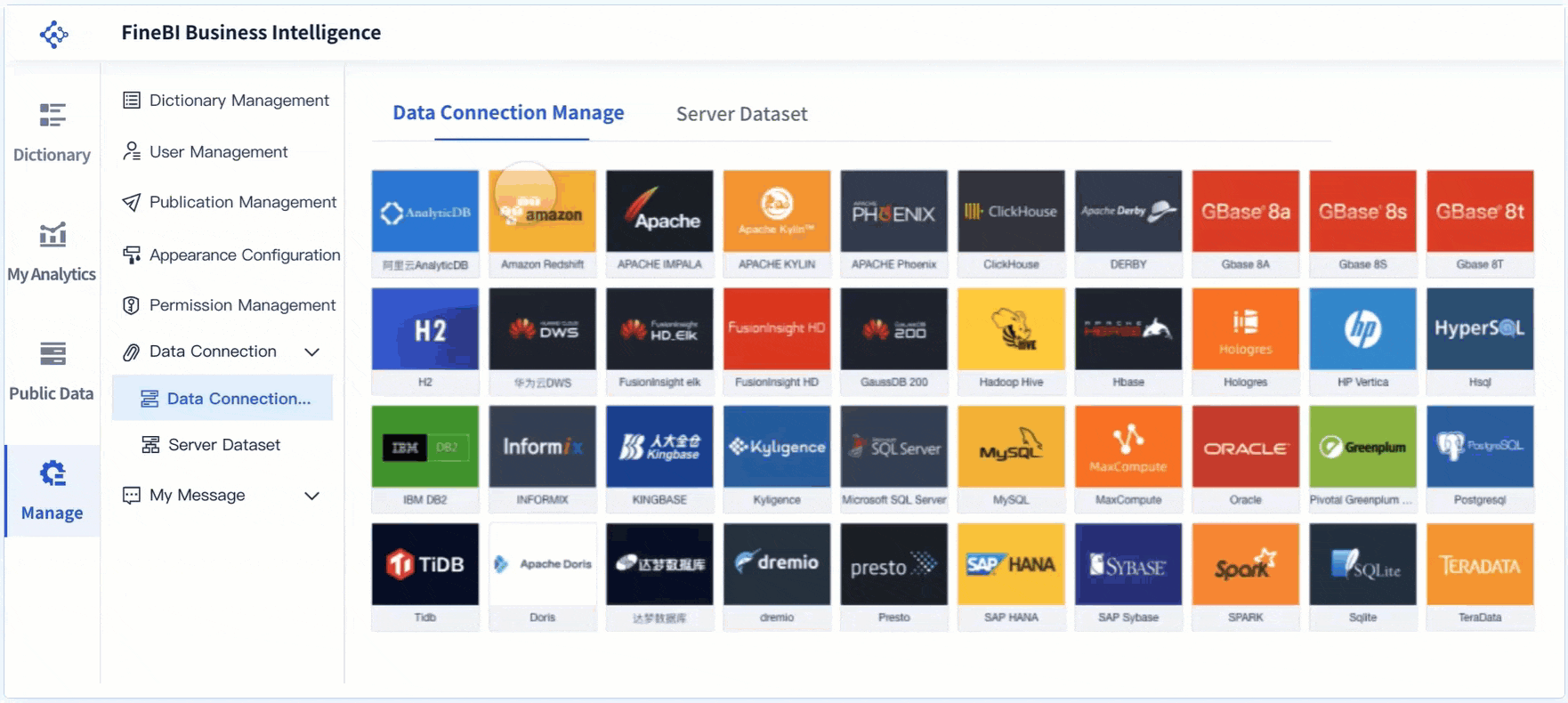
- Perform OLAP Analysis: Drill down into data, filter results, and uncover hidden patterns.
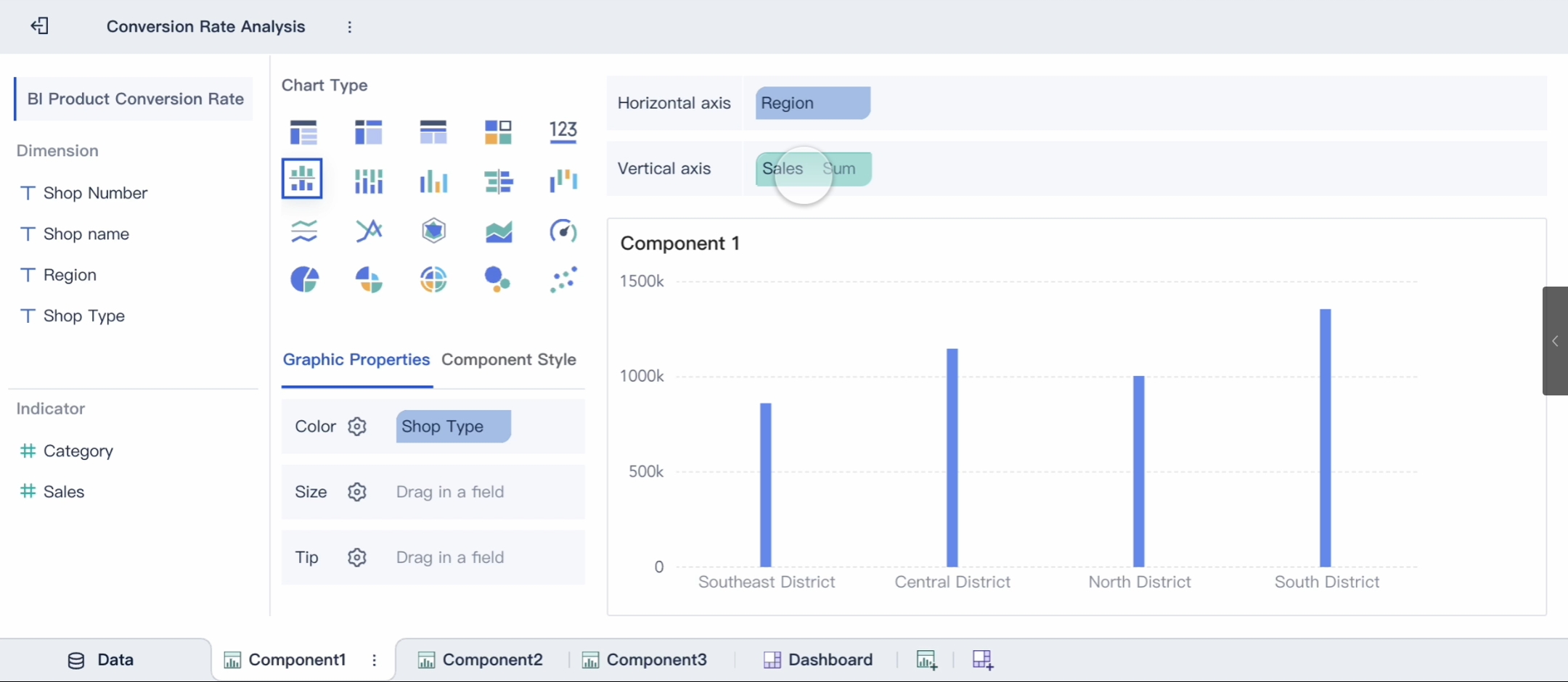
- Collaborate Effectively: Share dashboards with your team to align strategies and validate findings.
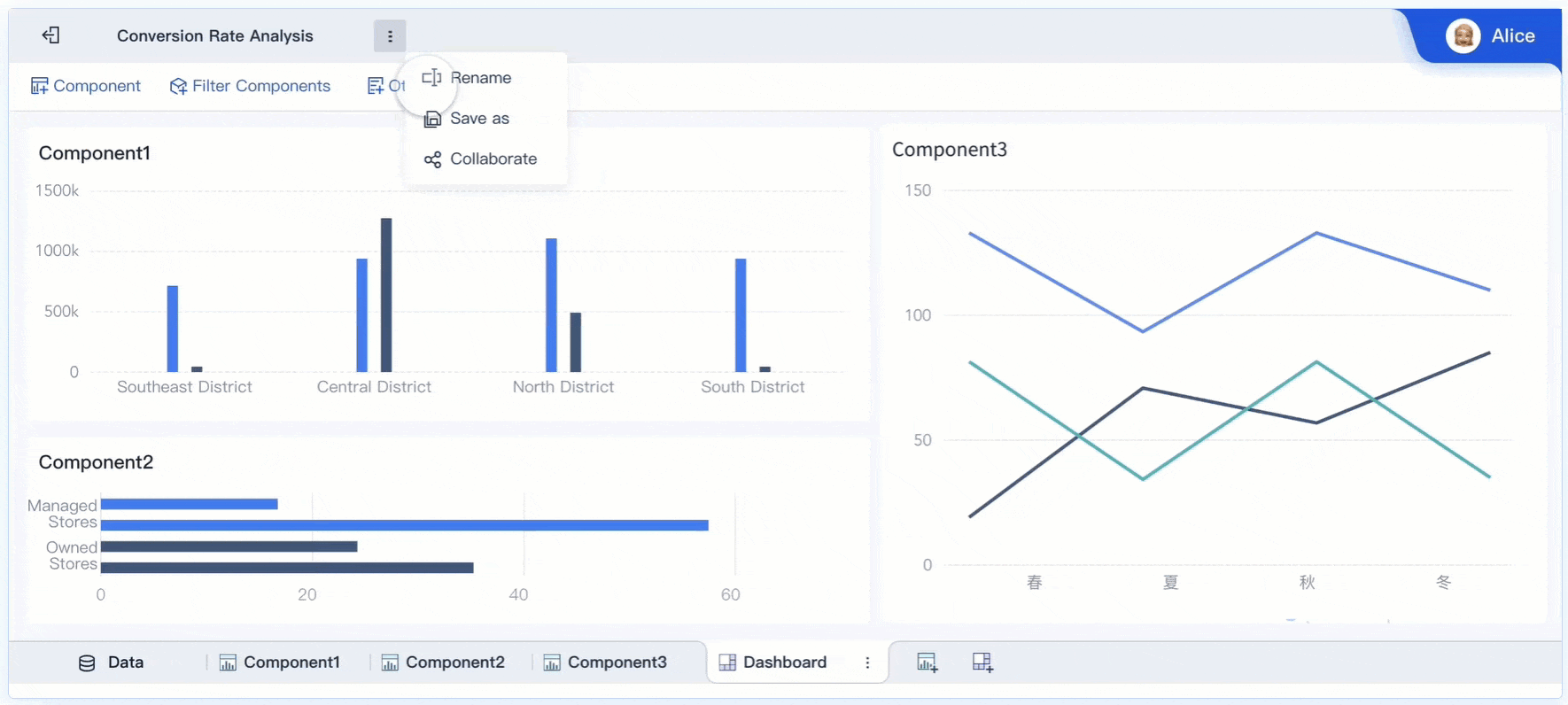
Tip: FineBI’s intuitive drag-and-drop interface makes it easy for anyone to analyze data, even if you lack technical expertise.
In data centers, FineBI enhances operational efficiency by providing real-time insights. For example, you can monitor server performance, track energy usage, and identify bottlenecks. These insights help you optimize resources and reduce costs. By using FineBI, you gain a competitive edge in managing complex data environments.
FineReport for Enhanced Reporting in Data Center Malaysia Operations
FineReport simplifies reporting and analytics for data centers. Its flexible report designer allows you to create pixel-perfect documents and dashboards tailored to your needs. You can automate report generation, schedule tasks, and distribute insights to stakeholders effortlessly.
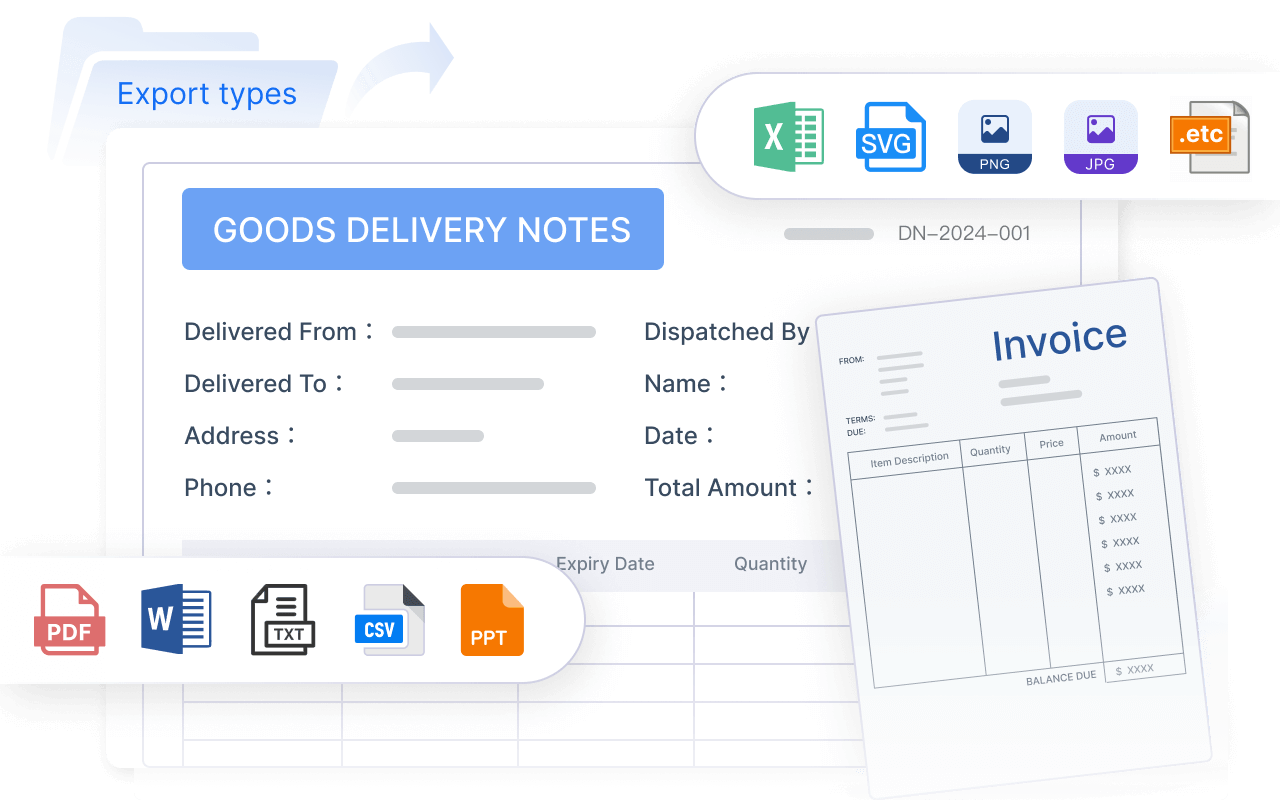
Key features of FineReport include:
- Multi-Source Data Integration: Combine data from various systems for comprehensive reporting.
- Advanced Visualization: Use over 70 chart styles to present data in a visually appealing way.

- Automated Scheduling: Set up daily, weekly, or monthly reports to save time and ensure consistency.
| Feature | Benefit |
|---|---|
| Multi-Source Integration | Consolidates data for unified analysis. |
| Advanced Visualization | Enhances understanding with dynamic charts. |
| Automated Scheduling | Reduces manual effort and ensures timely delivery. |
FineReport helps you streamline operations in data centers. For instance, you can track energy consumption trends, monitor cooling system efficiency, and analyze customer usage patterns. These capabilities improve decision-making and operational performance.
FineVis for Advanced Data Visualization in Data Center Malaysia Operations
FineVis takes data visualization to the next level. It offers over 60 chart types, dynamic 3D visualizations, and customizable dashboards. You can create interactive maps, analyze real-time data, and present insights in a visually compelling way.
FineVis enables you to:
- Visualize Complex Data: Use Sankey diagrams, Gantt charts, and 3D models to simplify intricate datasets.

- Access Dashboards Anywhere: View insights on smartphones, tablets, or large screens.
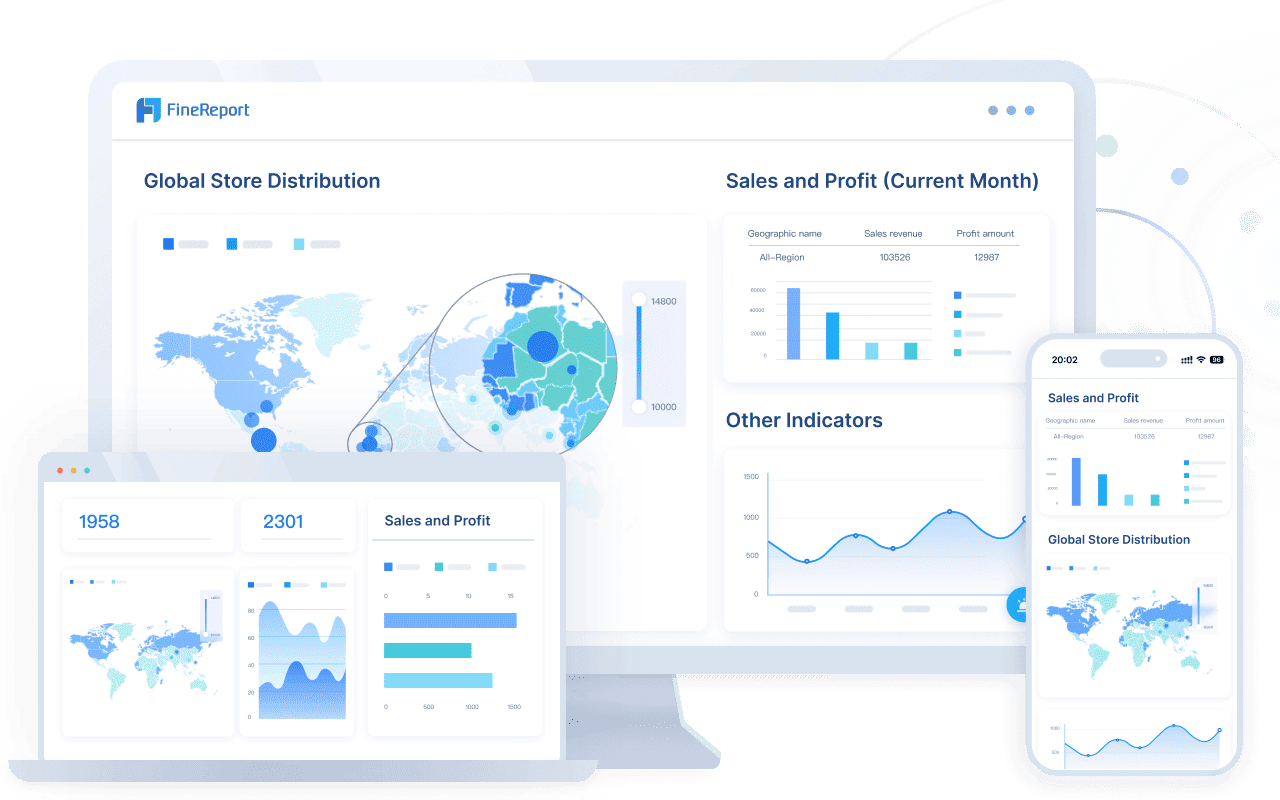
- Enhance Collaboration: Share visualizations with your team for better decision-making.
Note: FineVis supports real-time analytics, ensuring you always have the latest data at your fingertips.
In data centers, FineVis helps you monitor server health, track network performance, and visualize energy usage. Its adaptive design ensures seamless access across devices, making it ideal for on-the-go management. By leveraging FineVis, you can transform data into actionable insights that drive efficiency and innovation.
Here is an interactive demo created by FineVis, click to experience it.
Malaysia is poised to become a leading data center hub by 2025. Investments from global tech firms, such as ByteDance's RM10 billion commitment to AI development, highlight the country's potential. The demand for electricity has surged, with 31 projects already securing supply agreements, creating opportunities for growth.
Balancing this progress with challenges like energy sustainability and regulatory barriers is essential. By addressing these issues, Malaysia can strengthen its position in the global digital economy. Its strategic location near Singapore further enhances its appeal, making it a prime destination for data center investments.
Click the banner below to try FineReport, FineBI and FineDataLink for free and empower your enterprise to transform data into productivity!
Continue Reading About Data Center Malaysia
Why Your Organization Can't Thrive Without BI Tools in 2025
Top Business Intelligence Services Providers to Watch in 2025
FAQ

The Author
Lewis
Senior Data Analyst at FanRuan
Related Articles

Reviews of Data Intelligence Companies Leading the Industry
Compare top data intelligence companies and platforms, highlighting key features, integration, and business impact for informed decision-making.
Lewis
Nov 11, 2025

What Is Enterprise BI and Why Should You Care
Enterprise BI empowers organizations with real-time insights, scalable analytics, and unified data, driving smarter decisions and a competitive edge.
Lewis
Nov 09, 2025

Business Intelligence Engineer Amazon Salary Revealed
The average business intelligence engineer amazon salary in 2025 is $101,752, with total compensation reaching up to $224,000 based on level.
Lewis
Sep 09, 2025
